John Constable
John Constable is one of Englands leading landscape painters. Article for those travellers exploring the villages and landscapes of England. An Antipodean travel company serving World Travellers since 1983 with small group educational tours for senior couples and mature solo travellers.
18 Jul 23 · 14 mins read

John Constable
By Marco Stojanovik
English artist John Constable (1776-1837) is one of the greatest landscape painters of all time and one of the most important artists of the Romantic Tradition. Nature was his primary inspiration. Along with his rival J M W Turner, he created a new style that detailed nature as the focal point in the art, rather than placing it simply as a backdrop to a historical scene being played out in the foreground. Although he spent most of his later life in other parts of England, the area around his place of birth – Dedham Vale – would form a solid, autobiographical basis for his paintings. It’s not for nothing this area is still known as ‘Constable Country’. His choice of subject matter as well as the broad and rapid brushstrokes characterising his paintings, which he based on his sketches, were a great influence on later generations of artist, from the Barbizon School of painters and the Impressionists to artists like Lucian Freud.
This article explores John Constable’s life and works as background reading for Odyssey Traveller’s 22-day England Literature and Art Small Group Tour for mature and senior travellers. This tour travels to numerous destinations of artistic significance in the British Isles – including Constable Country – in order to enhance your understanding of its literary and artistic achievements. It is fully escorted and engages a number of specialist guides along the way to bring the likes of Constable, Shakespeare, Jane Austen, Turner and others to life in our mind’s eye.
Much of the information used in this article is extracted from Conal Shields, Peter Bower, Michiel Plomp and Terry van Druten’s John Constable.
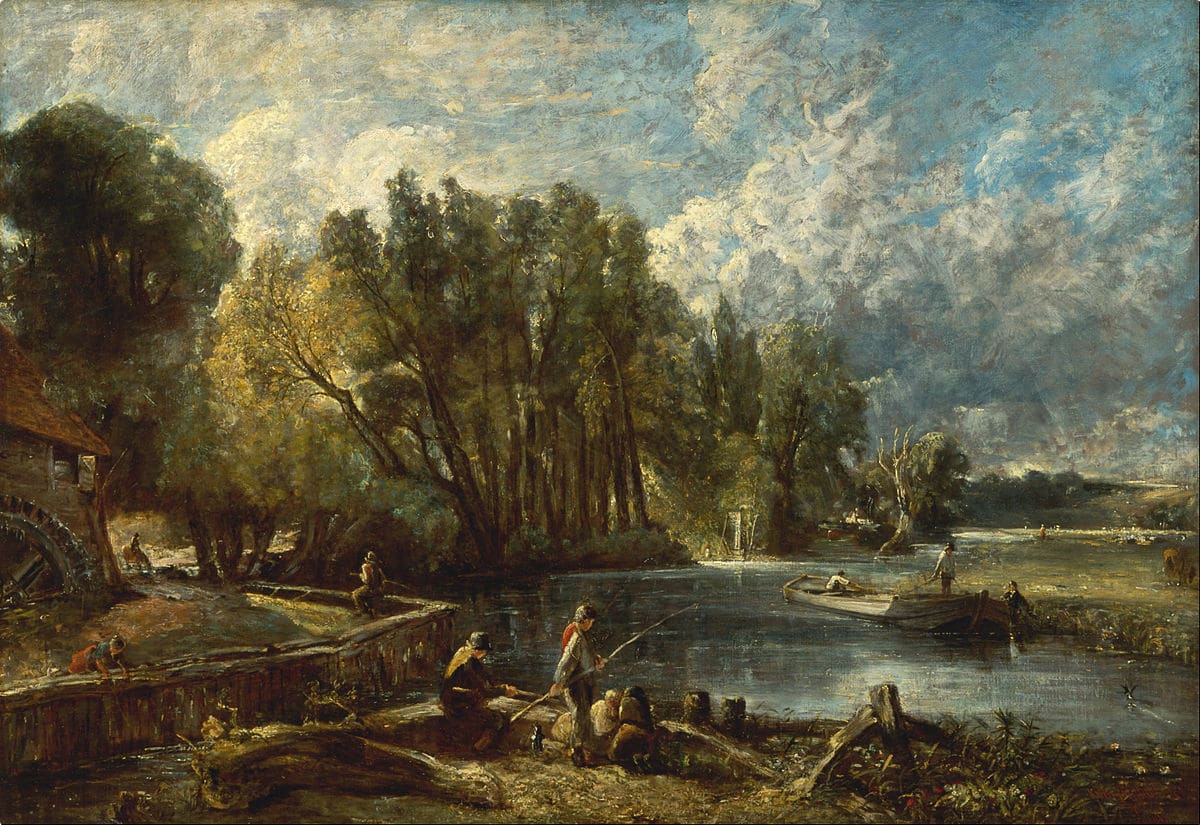
Early Life & Inspirations
John Constable grew up in East Bergholt, a village on the River Stour in Suffolk, East England. He was born on 11 June 1776 into a wealthy family, his father a gentlemen corn farmer, merchant, and owner of Flatford Mill in East Bergholt and, later, Dedham Mill in Essex. Constable’s father initially disapproved of the idea of a career as an artist. Rather, John was expected to one day take over his father’s business, his older brother Golding unable due to an intellectual disability.
As such, Constable was largely self-taught as an artist. His keen interest in painting first began when he was a teenager. It was then when he began painting under the supervision of amateur painter John Dunthorne, a local plumber, glazier, and ornamental painter. Dunthorne introduced Constable to the technical aspects of painting and drawing, and together they would spend time sketching out in nature in the surrounding Suffolk countryside.
Constable was taken into his father’s business around 1793. He never gave up on the idea of pursuing art, however. Around the same time, in the mid-1790s, he was introduced to the influential art patron amateur painter Sir George Beaumont, who collected paintings of both contemporary and old masters, including work by Claude Lorrain, Peter Paul Rubens, and Canaletto. In 1795, Beaumont showed Constable his favourite painting, Landscape with Hagar and the Angel by Claude Lorrain, which served as a great inspiration for Constable.
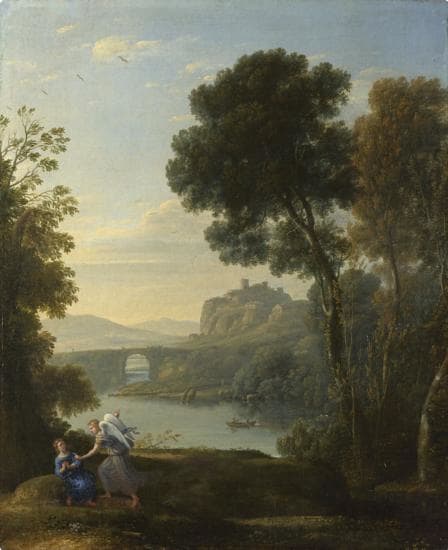
Then, in the summer of 1796, he met the professional painter and engraver John Thomas Smith, who is sometimes referred to as his informal artistic mentor. He advised him in painting, introduced him to ‘the picturesque’ (a style combining rural and ‘picturesque’ elements), and opened his eyes to landscape artists like Thomas Gainsborough and Jacob van Ruisdael.
Eventually, after seven years of Constable working in the family business, his brother Abram, who was more adept for the profession, took over the running of the mills. The path was now clear for Constable to concentrate on painting. Although his father wasn’t in favour of his choice of profession, both his parents supported him, giving him permission to study at the Royal Academy Schools in London.
Constable moved to London in 1799, with a small allowance from his father. In February, he made himself known to Joseph Farrington, an important member of the Royal Academy, and a week later he entered the prestigious school as a probationer (student serving a trial period) in drawing. Just a year later, he was admitted as a full student. During this period Farrington offered great support gave him advice and lent him art works by Old Masters to copy,
Early Career
1802 was an important year in the career of John Constable. For one, for the first time, he was allowed to take part in the annual Royal Academy exhibition. Even more importantly, though, he took a clear decision to wholeheartedly pursue becoming an artist. This meant foregoing both the intentions of his father, who wanted in to return to East Bergholt to join the family business, and his old family friend John Fisher, Bishop of Salisbury, who had arranged for him a job as an art teacher at the Military College at Great Marlow.
Instead, he chose a career as an independent landscape painter, studying nature directly in the English countryside. On May 29, in a long letter to Dunthorne, he passionately explained his choice. In it, he clarified that it was his ambition to become a landscape painter of ‘pure and unaffected scenes’, as opposed to one who painted idealised, picturesque, or sublime landscapes.
Before he could dedicate himself entirely to landscapes, however, he would have to take on various ventures to earn an income. In the years to follow, he accepted commissions for painting portraits, reproductions, country house paintings, and the occasional religious picture. He also spent almost a month aboard a ship in 1803, probably with the idea of starting a career as a marine artist.
Still, his main focus remained the English landscape, slowly finding his own style during this period. In 1801, he made a sketching tour through hilly Derbyshire. And in 1806, he made an extensive two-month tour of the mountainous, and famously picturesque Lake District, producing dozens of complex drawings and atmospheric watercolours. Unfortunately, though, exhibitions of these works in 1807 and 1808 failed to attract public notice.
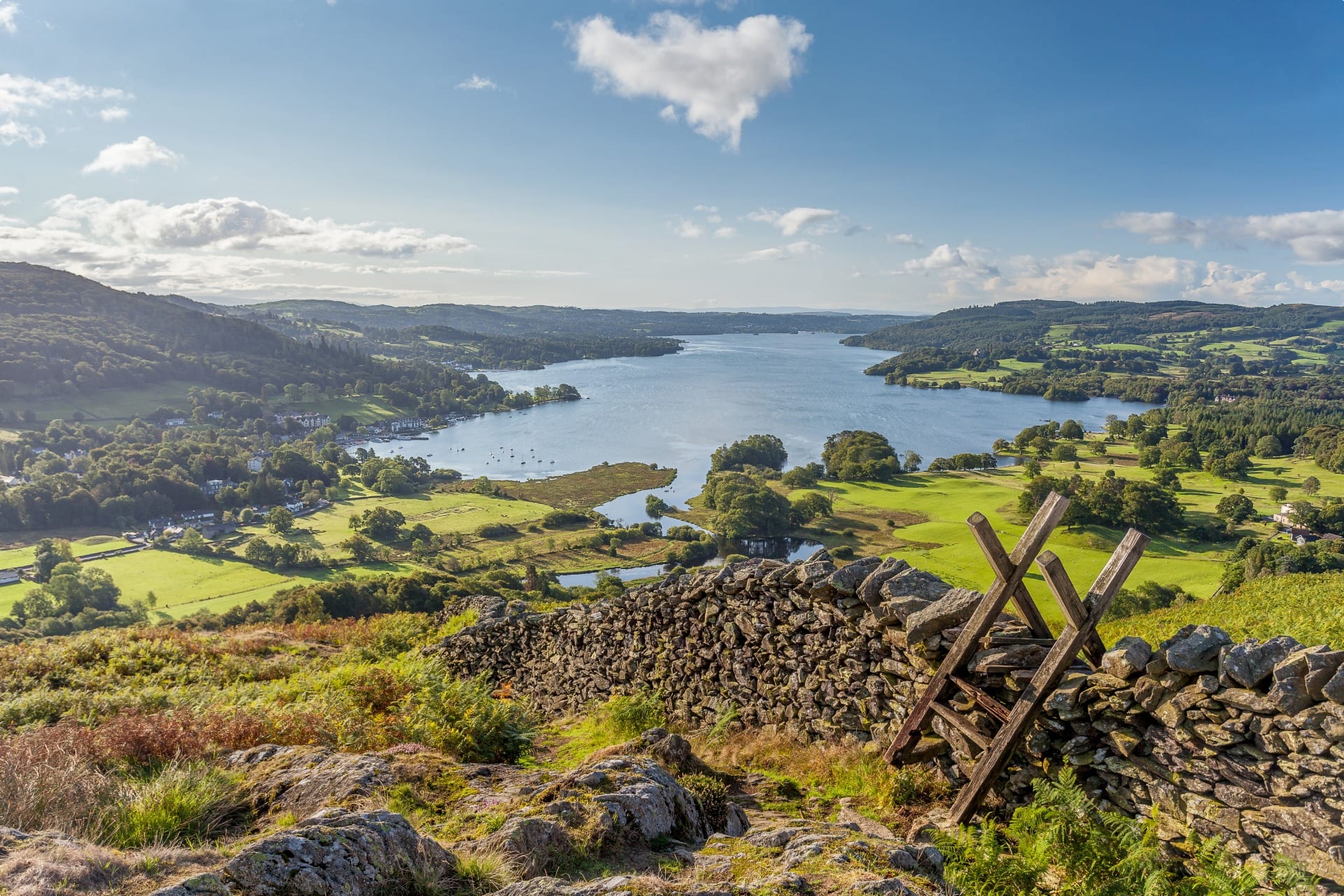
It was from during time, in the years 1807-1810, that Constable’s work greatly developed technically, stylistically, and subject-wise, coming more into its own rather than resembling those of alternate friends and advisors. From 1808, he began to regularly paint small oil sketches outdoors. This initially rather tame linear approach soon grew more daring, and his use of colour more adventurous. By 1810, he had become extraordinary skilful with the medium.
Thematically, his paintings celebrated the continuum and stability of English country life. Subjects were found in the Stour Valley. He often spent time painting at his native East Bergholt, visiting from London in the late summer and sometimes staying there for months. His stay in 1808, in particular, was crucial in his development as a painter, remaining there for an extended period from August until Christmas. Also influential was his visit to John Fisher and his family in Salisbury in 1811. Salisbury’s cathedral and surrounding landscape were a great inspiration, featuring in some of his greatest paintings.
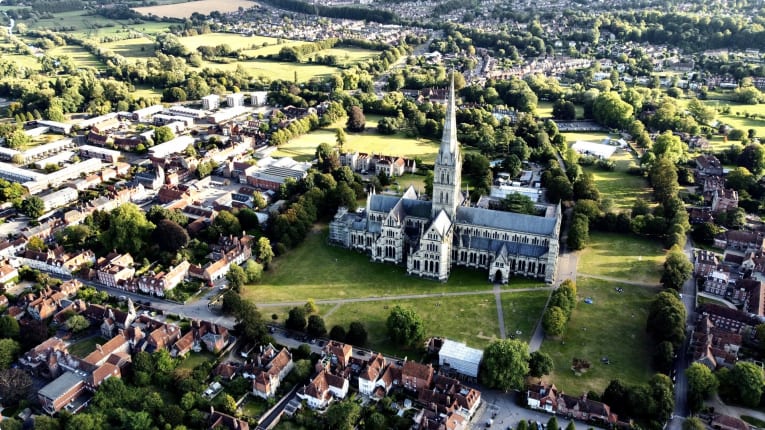
Marriage
Constable’s great love was Maria Bicknell, a childhood friend, whom he developed deep, romantic feelings for from 1809. The feelings were mutual, but Maria’s family did not consider Constable a suitable suitor. The main obstacle was the class difference. Maria’s grandfather was a clergyman, the Rector of East Bergholt, and therefore she and her family belonged to a higher class than Constable, who was just the son of a gentlemen farmer and merchant. Her family, therefore, was opposed to them marrying, considering the Constables as social inferiors. The grandfather, in particular, threatening to disinherit Maria if the marriage went ahead.
Constable could not afford this. He was not yet a very successful painter and was still dependent on his parents. And although approving the match, the parents did not want to support the marriage until Constable was financially secure. Neither was a penniless marriage an option, as Maria pointed out to Constable, this would undermine any chances of making a career in painting.
Despite this difficult situation, the pair reused to give up on hope, secretly keeping in touch for seven years. Only with the deaths of Constable’s parents in quick succession – a year after his mother died in 1815, his father passed away – would a bittersweet solution emerge. As Constable’s younger brother Abram took over the family business, he afforded Constable an allowance of 200 pounds a year. This finally gave him financial independence, allowing him to marry Maria, despite her family’s wishes.
The couple married on married October the 2nd, 1816. This was followed by a honeymoon tour of the south coast at Weymouth and Brighton. Here, the sea enthused Constance, as he developed new techniques of splendid colour and vibrant brushwork.

Growing Recognition in London
Following their wedding and honeymoon, John Constable and Maria Bicknell moved to London. In the following year, they returned to East Bergholt, but this can be considered a farewell trip, as they returned less frequently and for shorter periods thereafter.
This did not mean, however, that Constable stopped using the Stour Valley as a subject. For at least another 10 years, the area provided him with subjects for his paintings, including several important ones, such as The White Horse (1819), The Hay Wain (1821), and The Leaping Horse (1825). As Constable couldn’t paint on location in the Stour anymore, he selected themes and details of existing oil sketches and drawings and combined them into new compositions. The paintings therefore have an element of removal to them, as if filtered through memory.
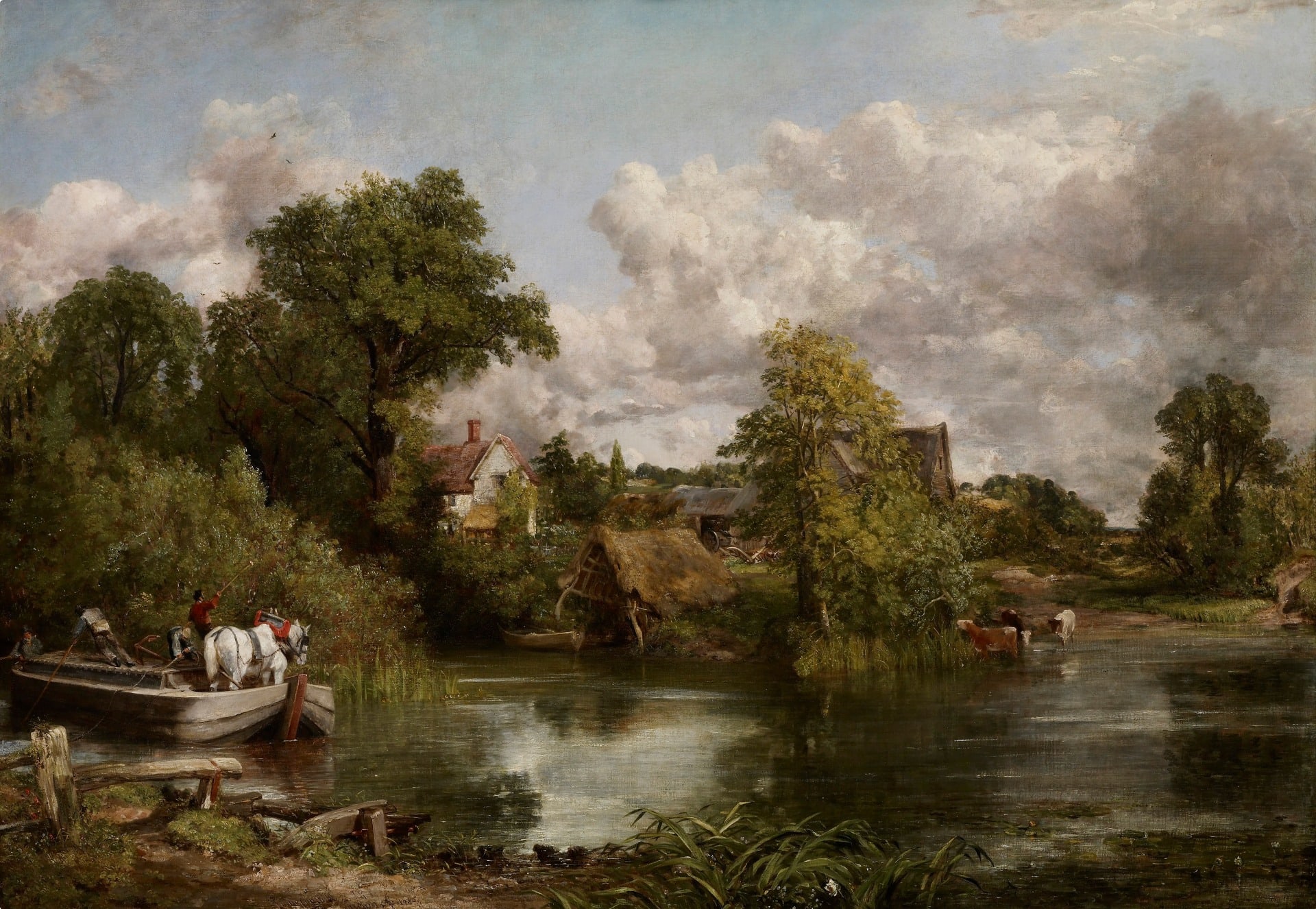
Now with a wife and children to support, it was essential for Constable to find professional recognition. As such, his works during this period began to be painted on a larger scale. While this could have been a means of promoting the importance of landscape painting – still then considered an inferior art form – Constable also hoped his paintings would attract attention at the packed Royal Academy exhibitions.
His hopes quickly came true. At the exhibition of 1819, his first exhibited large-scale painting, the 1.9 metre (6.2 foot) A Scene on the River Stour, attracted much public attention and critical approval – so much, that it could be called a turning point in his career. His friend, Archdeacon John Fisher, bought the painting, soon renaming it The White Horse, making it Constable’s first sale of an important canvas, and providing him with a new-found level of financial freedom. Partly as a result of the painting’s strong reception, Constable was finally elected an Associate Member of the Royal Academy.
Most significantly, the encouragement of public attention led to a new series of “six footers”, large-scale paintings depicting monumental River Stour landscapes. For many, they are the defining works of Constable’s career, consisting of Stratford Mill (1820), The Hay Wain (1821), View on the Stour near Dedham (1822), The Lock (1824), and The Leaping Horse (1825).
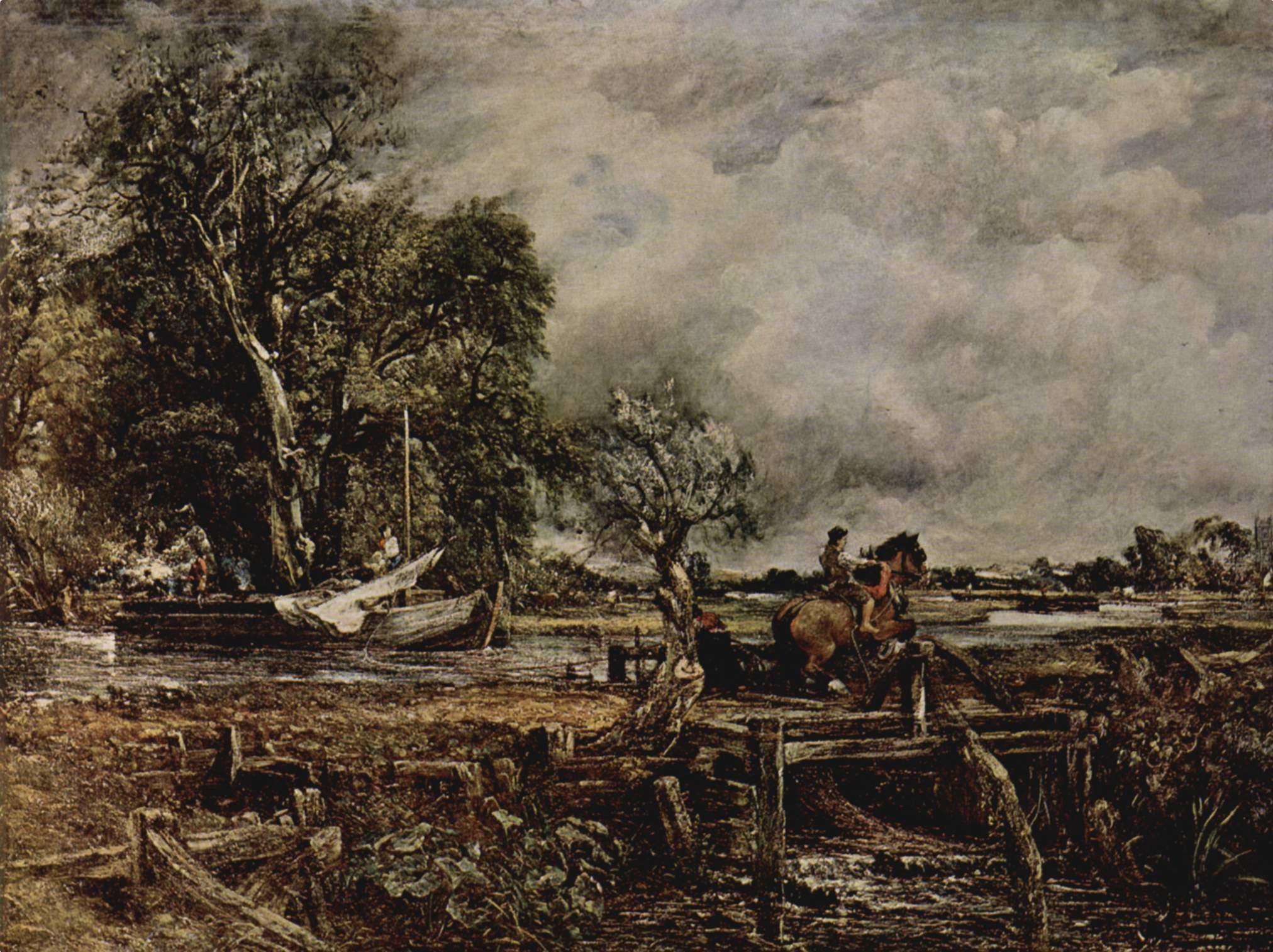
Success
Fame eventually came from an unexpected quarter: France. Two Frenchmen, the painter Theodore Géricault and author Charles Nodier, had seen the Hay Wain at the Royal Academy’s exhibition in 1821. Géricault is said to have returned to France stunned by the painting, while Nodier praised Constable’s look towards nature rather than reliance on trips to Rome for inspiration, common amongst French artists.
As a result of their enthusiasm, Paris-based British art dealer John Arrowsmith went to see Constable’s work at the British Institution in Paris in 1822, before purchasing four of his paintings, including the six-footers The Hay Wain and View on the Stour near Dedham, in 1824.
Arrowsmith exhibited both six-footers at the Paris Salon later that year. Immediately, they caused a sensation, with King Charles X awarding Constable a gold medal for the paintings. This was undoubtedly the biggest success Constable had during his lifetime.
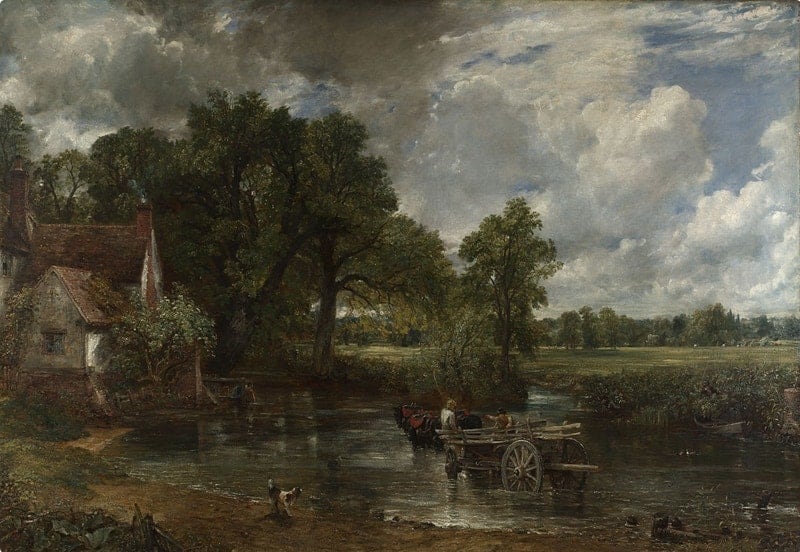
Following this success, Constable not only received commissions from Arrowsmith, but also from Paris dealer Claude-Scroth. While only selling twenty paintings in England during his lifetime, Constable was able to sell more than that in just a few years in France. Highly popular, his paintings made a big impression on French Romantic artists like Eugene Delacroix, Theodore Gericault, and Eugene Isabey. Still, Constable refused all invitations to travel to France to promote his work, writing matter-of-factly, “They cannot get me on this side of the water, and I shall not go there.”
Back in Britain, Constable’s fame in France has also made him more successful in Britain in the mid-1820s. Soon, the British press considered him one of the most important contemporary artists. And in 1829, he was finally elected a full member of the Royal Academy at the age of 52.
Constable, however, found it hard to capitalise on the success that slowly came his way. For a long time, he remained an isolated figure within the Royal Academy, which had to do with his personality. He was often grumpy, suffered mood swings, and lacked diplomacy. Consequently, he had little support from his colleagues – a major reason why his election as a member of the Royal Academy was so belated (his great rival, and peer, William Turner, by contrast, had achieved this at the age of 26).
Constable’s techniques, too, set him apart from his colleagues. He preferred to work with palette knives instead of brushes. The sketchiness was tolerated in small works but not in display canvases. Constable, however, wanted to create a range of textures, similar to what he saw in nature. That’s why his paint can be thick and full of structure, or fluid and thin. Besides, he liked to add small white dots, imitating playful sunlight, which were denigrated as Constable’s snow. Real breakthrough success and major recognition, therefore, would only come after his death.
New Locations, New Subjects
From 1819, John Constable frequented new locations, drawing subject matters for his landscapes beyond the Stour Valley. These new areas were different landscapes, different light, and a different topography brough him new inspiration and ideas, replacing East Bergholt as areas for experimenting.
Most significantly, he spent much time in Hampstead, a village north of London, where he rented a house for the summers between 1819 and 1826, before moving there permanently in 1828. The main reason for the move was Maria’s failing health; infected with tuberculosis, the fresh air outside London was better for her weak lungs.
From his house, Constable had a wonderful view of the surrounding area, ideal for observing the light and sky. In 1821, he began to paint an impressive series of cloud studies. This was then followed by an intensive, roughly 2-year period of ‘skying’, in which he produced dozens of cloud studies in watercolour, crayon and – above all – oil paint. The studies were unique in their ability to capture momentary qualities of changeable skies to accurately document the meteorological phenomena.

His goal was to eventually more realistically paint the sky – which he considered the chief ‘organ of sentiment’ of the landscape. More important still, he sought to integrate landscape, light, sky, and sun true to life to create his bigger paintings.
Constable and his family also took lodgings in Brighton from 1824 until 1828, looking towards the sea air as aid for Maria’s health. Constable painted various marine subjects in this period. Moving away from large-scale scenes, he produced a great number of drawings and oil sketches on the coast, with an eye for both frivolous tourism and the hardships of the fisherman’s life. His only ambitious six-foot painting of a Brighton subject was Chain Pier, Brighton, exhibited in 1827.
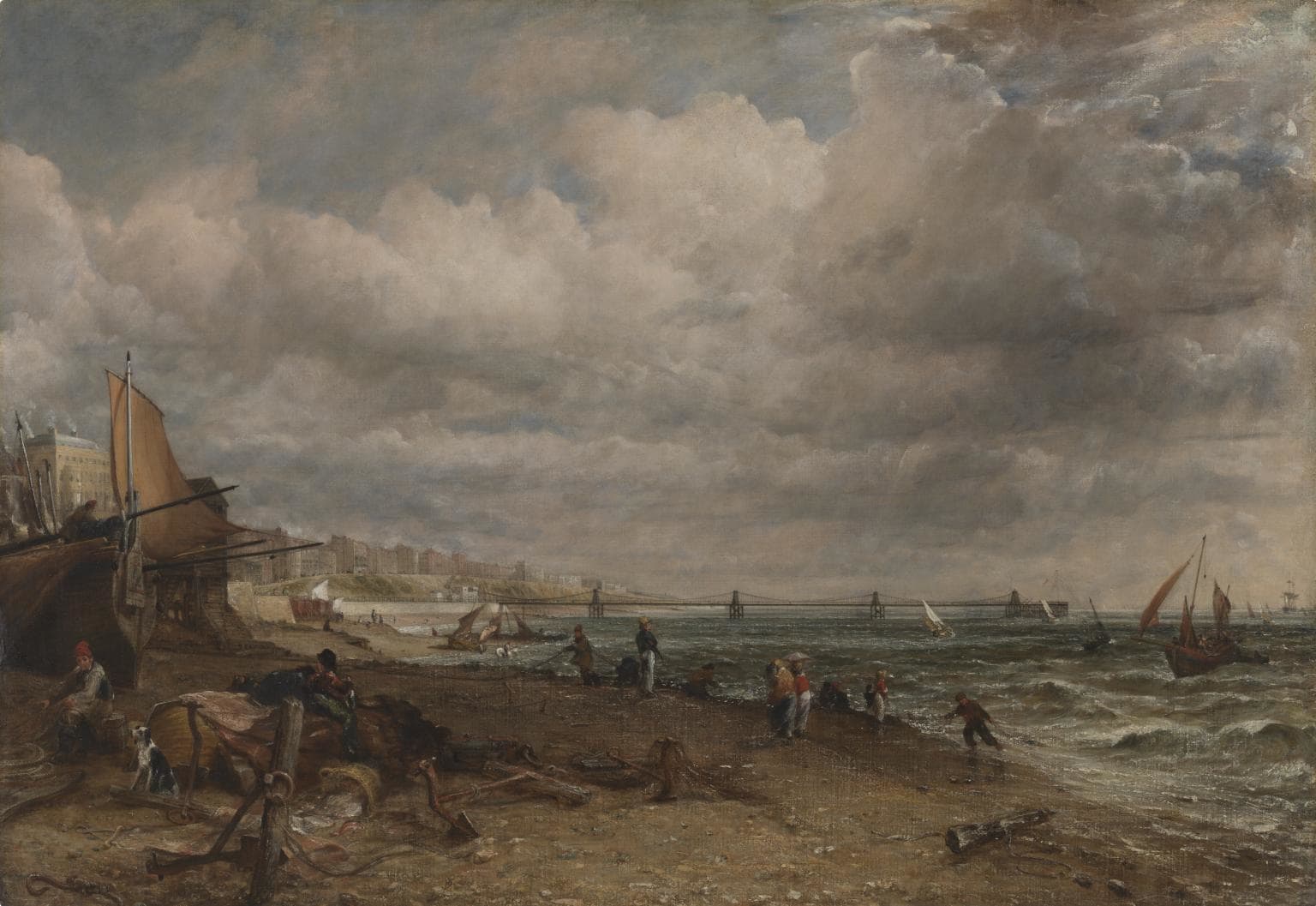
Later Years
John Constable’s wife’s died from Tuberculosis in November 1828. The event was a major turning point for the artist, serving an emotional blow from which he would never really recover. Still, he tried to pick up the pieces of his life as best as he could, driven not least by having to care for his seven young children. It’s from them he drew great comfort in his later years.
The loss of his great love dramatically affected his painting, with a move away from the serene to a more broken and accented style. His later six-foot masterpieces, Hadleigh Castle (1829) and Salisbury Cathedral from the Meadows (1831), are particularly expressive, a reflection of an inner turmoil and distress of the mind. Hadleigh Castle is a stark expression of ruin and desolation, while the depiction in Salisbury Cathedral from the Meadows of ominous black clouds and a rainbow create a highly dramatic feel.

Constable also began an ambitious project in his later years, a large-print publication of 22 mezzotints, titled Subjects of Landscape, Characteristic of English Scenery, From Pictures Painted by John Constable, R.A. (1830-1832). The prints were produced by the young artist David Lucas, in close consultation with Constable, with the aim of increasing his fame. It was an expensive project financed by Constable himself with funds used from £20,000 Maria’s father had left the couple upon his death, shortly before Maria’s own death. The speculation proved disastrous, however, taking more than a year to complete, with Constable acting hesitant and indecisive; and when the prints were finally published, they failed to attract enough subscribers.
Meanwhile, ill-health increasingly hindered Constable. He suffered from acute rheumatism, which often made it impossible for him to paint, especially large canvasses. However, he did produce several spectacular watercolours in this period, including Old Sarum and Stonehenge. The tumultuous melancholy of these paintings can be seen as highlights of Romanticism.
In 1831 he was appointed Visitor at the Royal Academy and became a popular figure with the students. His public lectures on the history of landscape painting were attended by distinguished audiences.
Constable died quite unexpectedly from heart failure during the night on 31 March 1837 at the age of 60. He was buried beside his wife, Maria, at the graveyard at St John-at-Hampstead.
Legacy
John Constable did not have much success during his life. True recognition of his work came posthumously, particularly when his daughter Isabel bequeathed more than 300 paintings and drawings to the South Kensington Museum (now the Victoria and Albert Museum) in 1888. Two years previously, The Hay Wain had become part of the collection of the National Gallery.
Today, Constable is considered to be one of the greatest landscape painters ever, as well as one of the masters of Romanticism, alongside artists like Casper David Friedrich, Eugene Delacroix, Francisco Goya and his great rival, J M W Turner.
More important still is his influence on the history of modern art. His paintings were a great source of inspiration to the Barbizon School of painters and, later, the impressionists.
England Literature and Art Small Group Tour
You can learn more about John Constable and his art during Odyssey Traveller’s 22-day England Literature and Art Small Group Tour for mature and senior travellers. This tour introduces travellers to some of the most significant literary and artistic achievements of England and Wales. Over three weeks travelling around England, from south to north and back again, we will attempt to come to an understanding of a variety of writers and artists and the landscapes that inspired them.
John Constable is a key focus, the tour including a drive through the countryside painted by the artist, as well as a walk through evocative Constable Country. Other painters and writers we study include J M W Turner, Geoffrey Chaucer, Shakespeare, Joshua Reynolds, Jane Austen, Thomas Hardy, the Bronte Sisters, William Hogarth, William Wordsworth, George Stubbs, and Thomas Hardy.
The interested traveller will be given the chance to visit many houses lived in by writers and artists from across the centuries. The house where Jane Austen wrote her novels is now a museum which we can visit. The romantic ruin of Tintern Abbey, which inspired both Turner and Wordsworth, is on our tour. We will walk through the charming country lanes of Constable country, take a hike over the Yorkshire moors, and listen to lectures by experts on topics as diverse as the Pre-Raphaelite Brotherhood and the novels of Thomas Hardy.
If you’re keen to experience this tour, please call or send an email. Or, to book, simply fill in the form on the bottom of this page.
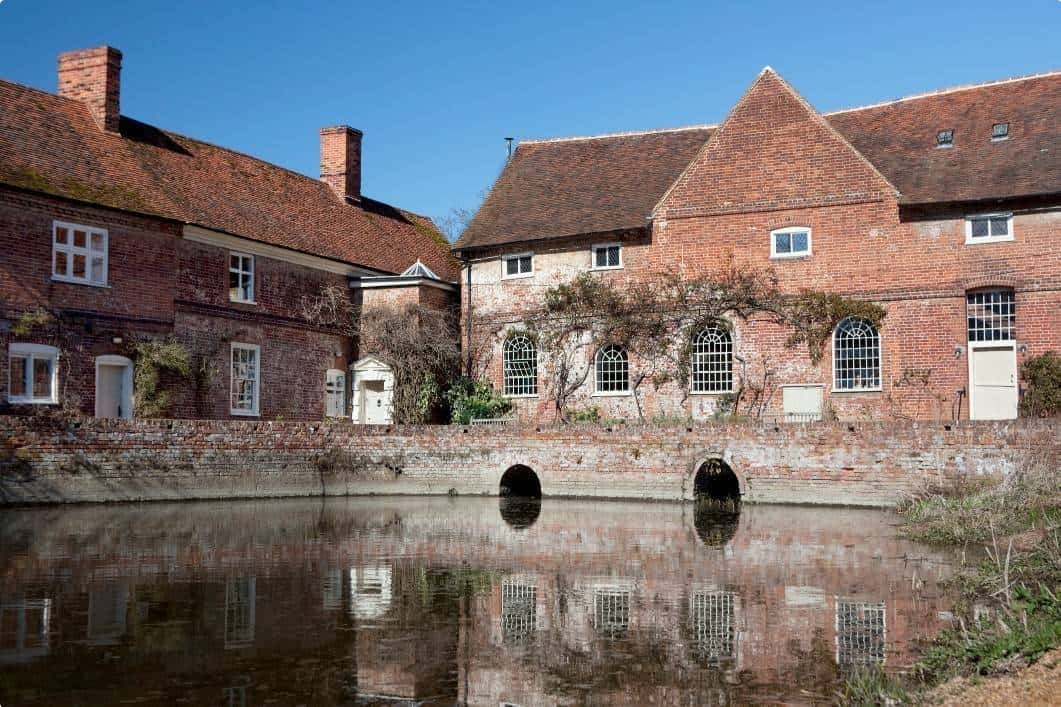
Odyssey Traveller has been serving global travellers since 1983 with educational tours of the history, culture, and architecture of our destinations designed for mature and senior travellers. We specialise in offering small group tours partnering with a local tour guide at each destination to provide a relaxed and comfortable pace and atmosphere that sets us apart from larger tour groups. Tours consist of small groups of between 6 and 12 people and are cost inclusive of all entrances, tipping and majority of meals. For more information, click here, and head to this page to make a booking.
Articles published by Odyssey to assist you on your visit to England
- Medieval British life
- Great Britain Travel tips
- Understanding British Churches
- English Village History
- Britain’s National Trust.
- Roman roads
- Gargoyles and Grotesques; an understanding.
- Victorian Country life
- Jane Austen’s England
- How to read the British landscape
- The Lake District for poets & Romantics
External articles to assist you on your visit to England
Related Tours
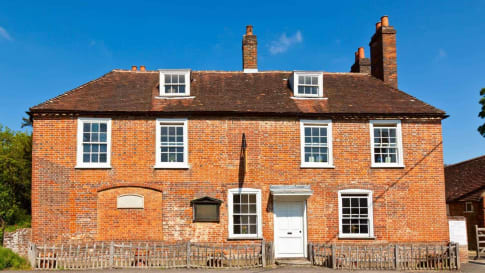
22 days
AugDiscovering the art and literature of England: Jane Austen, Shakespeare, and more
Visiting England
Stratford upon Avon, Shakespeares birthplace and Anne Hathaway's cottage as well as the Lake district a UNESCO World site and Dicken's London are part of guided tour for a small group tour of like minded people learning about the art and literature of England. Your tour leader and local guides share day tour itineraries to create a unique travel experience.
From A$17,765 AUD
View Tour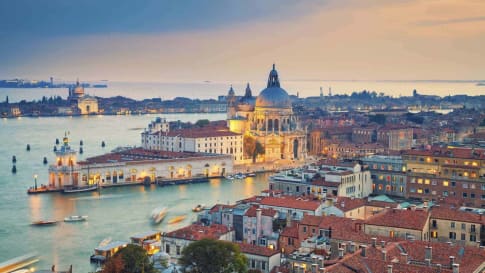
18 days
Aug, SepArt and History of Italy | Small Group Tour for seniors
Visiting Italy
Taken as a whole, Italian Civilization (which includes, of course, the splendid inheritance of Ancient Rome) is absolutely foundational to Western culture. Music, Painting, Sculpture, Architecture, Literature, Philosophy, Law and Politics all derive from Italy or were adapted and transformed through the medium of Italy.
From A$16,695 AUD
View Tour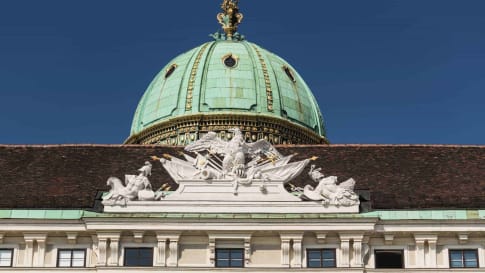
22 days
AugHabsburg Art and Classical Music small group Tour
Visiting Austria, Czech Republic
From the mediaeval jewel of Cesky Krumlow to the grandeur of the Habsburg’s summer palace in Vienna, our small group will embark on a 21 night journey to learn about these vibrant and artistically rich cities. We delve into the history of the famous artists, musicians, writers, architects and composers from Austria, Hungary, Poland and the Czech Republic.
From A$15,245 AUD
View Tour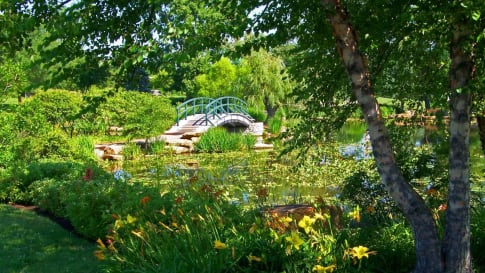
20 days
Apr, SepFollowing Monet
Visiting France
Join Odyssey Traveller, one of the best small group tour companies for Europe, as we follow French Impressionist master Claude Monet (1840-1926) to the beloved places he painted joined by local guides in France on this 20-day European tour. Each day our small group journey visits key destinations that influenced Monet. Join like minded people be they couples or solo travellers on this escorted tour. Minimal Single supplement charged to Solo travellers.
From A$15,450 AUD
View Tour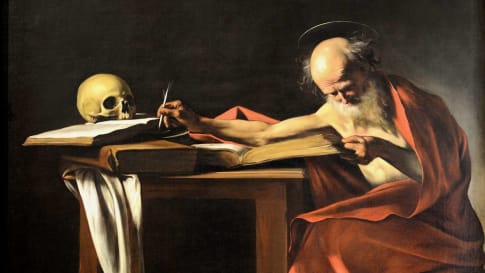
20 days
May, OctCaravaggio’s Journey | Small Group Tour in Italy
Visiting Italy, Malta
On this small group tour of Italy and Malta for mature and senior couples and solo travellers we trace the life of Caravaggio, exploring the artistic works he left behind and the tumultuous life he led. We follow him from his birthplace in Milan to Rome, Malta, Sicily and Naples. In each place he lived Caravaggio left behind a rich legacy of art for us to admire.
From A$15,125 AUD
View TourRelated Articles
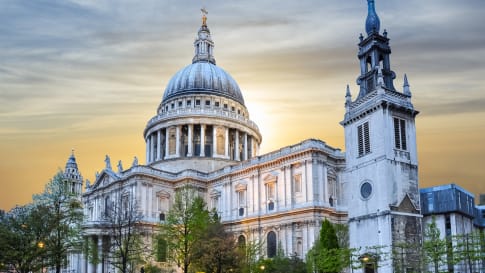
18th Century London
London, the Romans arrived and here on the Thames over time the city has grown. Article shares the history of evolution in the 18th century as the Industrial revolution gathers pace. An Antipodean travel company serving World Travellers since 1983 with small group educational tours for senior couples and mature solo travellers.
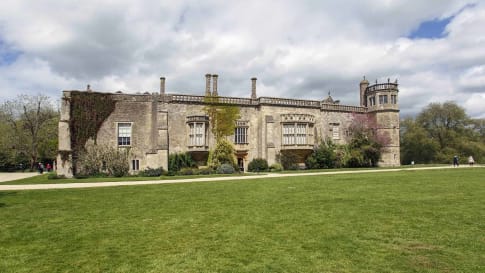
Britain’s National Trust role for successful small group history tours
Britain’s National Trust: Historic houses, gardens and natural wonders Britain is home to many attractions, many of them rich in the region’s history. Sites and artefacts are preserved beautifully, and […]

British Village Icons: Definitive Guide for Travellers
Icons of the British Villages: Pubs and Cottages The British pub and cottage figure prominently in the image of a (often romanticised) quintessential “British village”. In this article, we will give special attention to these…
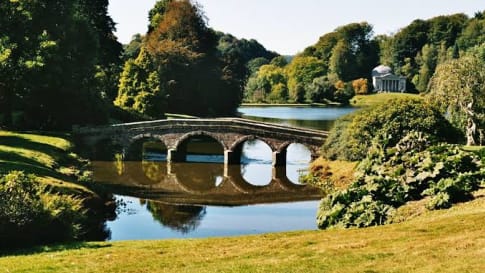
Capability Brown: The English Garden Genius
Article for senior couples and mature solo travellers interested in gardens and design in England and Europe with small group tours of interest.. Brown is regarded as a genius.
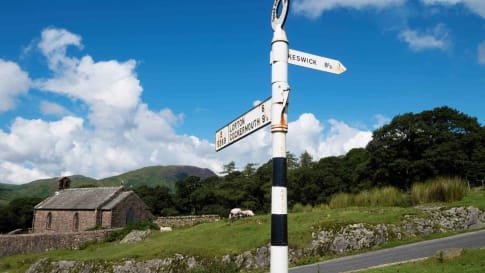
Discover the Lake District England
Article supporting senior couples and solo travellers with articles of interest about England, the romantics of the lake district. As well as tours and walks in the Lakes.

Ely Cathedral, England
Ely Cathedral, part of a network of English Cathedrals that form articles about Britain for the curious small group traveller. An Antipodean travel company serving World Travellers since 1983 with small group educational tours for senior couples and mature solo travellers.
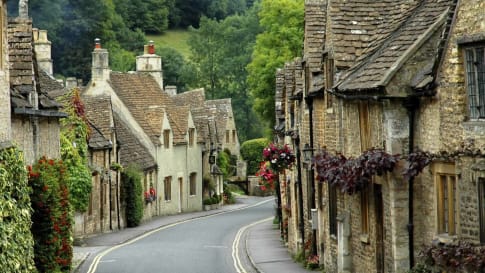
English Village History
An English Village history. Prepared for mature and senior travellers, couples or solo traveller considering joining a small group tour of England's villages.
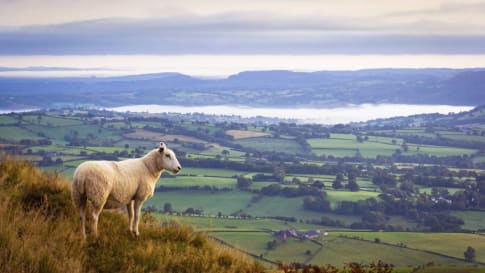
History of English Wool
English wool generated a lot of wealth for the merchants. Traded from Bruges to Venice, a product taxed by Kings and in demand across Europe. Click through to read more.n An Antipodean travel company serving World Travellers since 1983 with small group educational tours for senior couples and mature solo travellers.

Touring England's villages
Touring England’s villages For many travellers, London is synonymous with England. This lively, cosmopolitan capital is a must see, of course, but there is more to England than booming cities and industrial centres. Instead, what…


